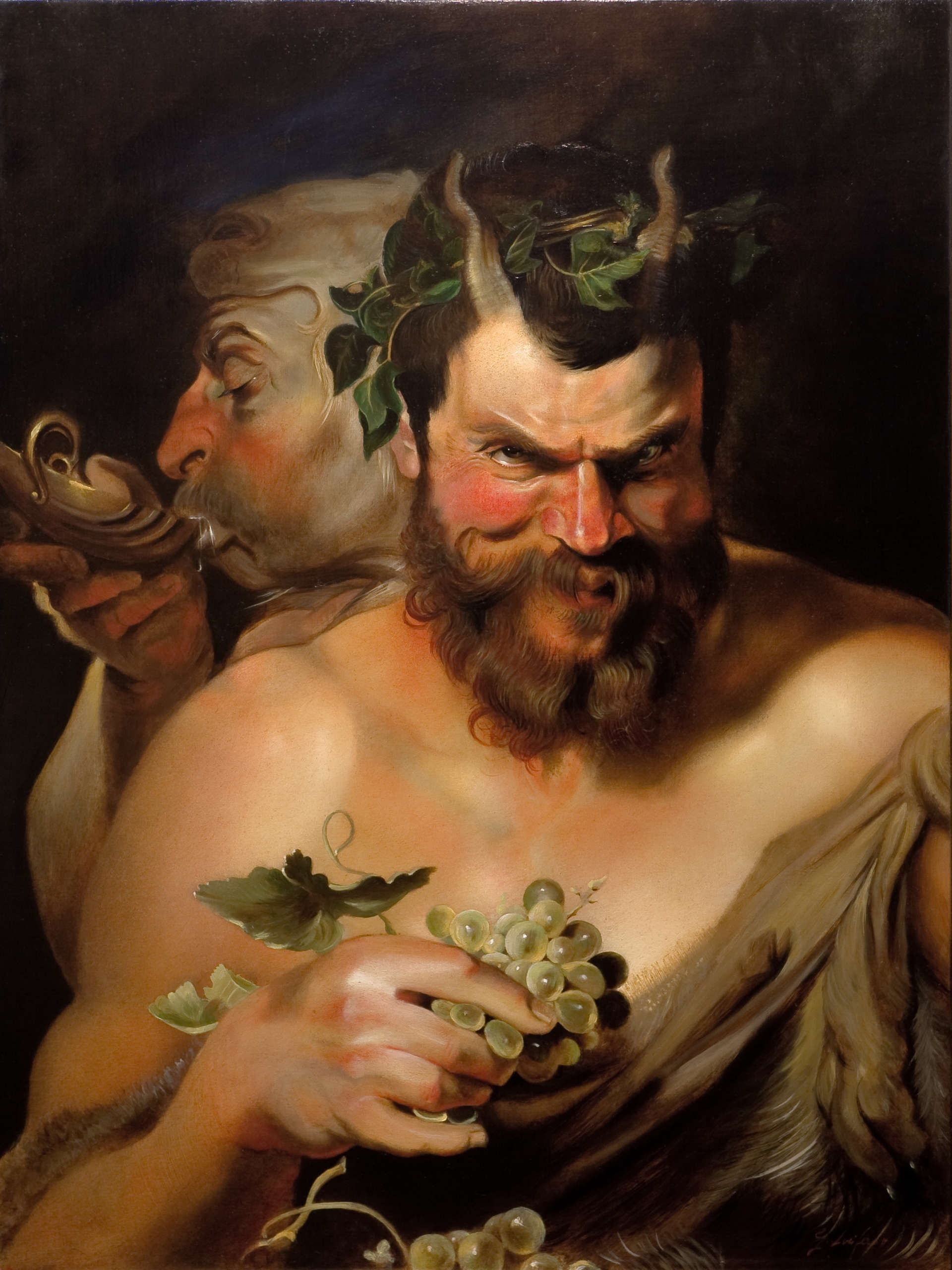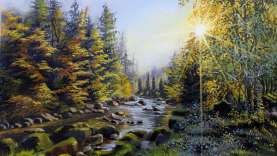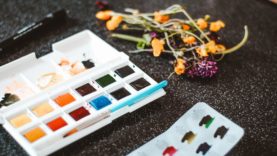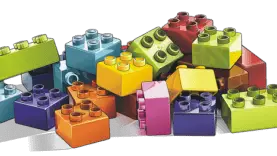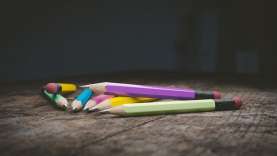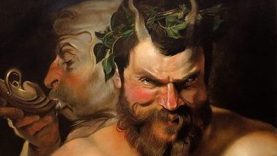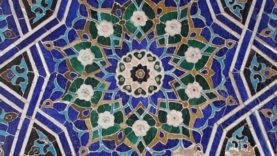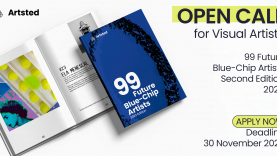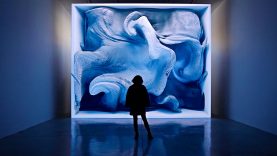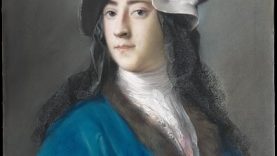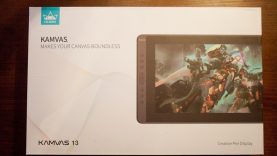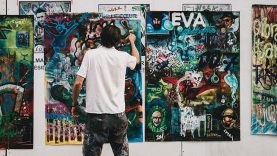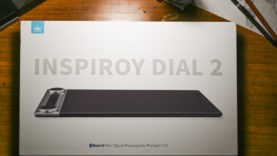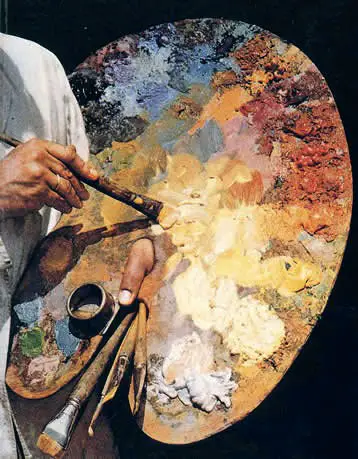
Oil painting – A simple guide for beginners
Introduction
Oil was used as a binder for pigments from the sixteenth century and it became the most popular medium during the next four centuries. Even today it’s one of the most used techniques in visual Arts.
Painting in oil could be intimidating but don’t worry, it’s easier than you think. Read this guide and learn all you need to start painting with oil paints.
Let’s begin with some fundamentals:
What is paint?
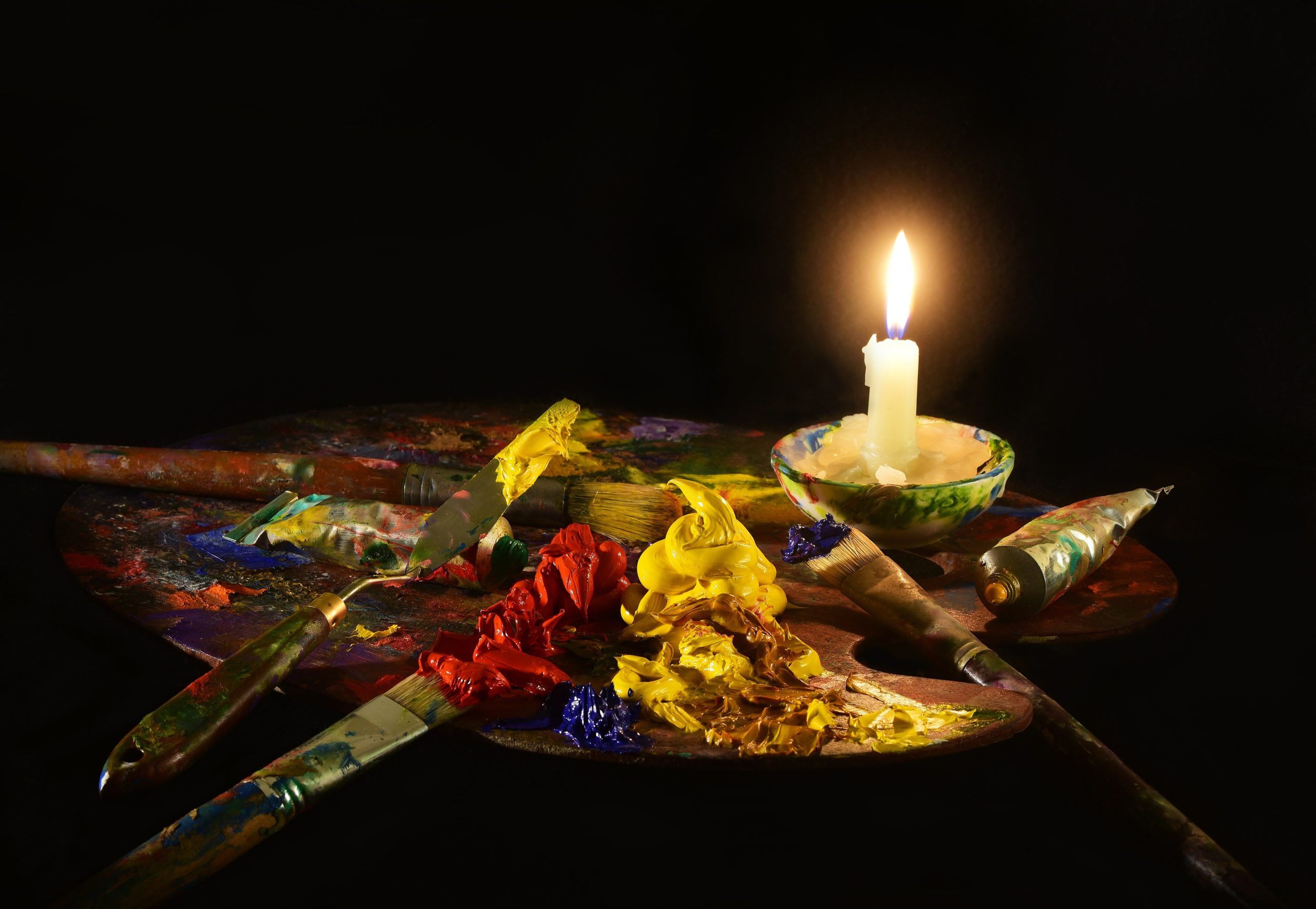
Simplifying, paint is made by pigments and a binder.
Without involving physics let’s say that pigments are powdered material which can reflect a certain color and a binder is a substance that can hold pigments together and once dry, works like a glue that keeps the paint sticky to the surface.
Just some examples:
Pigments + Egg yolk = Egg Tempera
Pigments + Oil = Oil paint
Pigments + Wax = Colored pencils or Wax pastels
Pigments + Arabic gum = Watercolor
Oil paint is made by pigments mixed with a drying vegetable oils (linseed, walnut or poppy oil). When the oil is exposed to the air, it catches oxygen hardening itself, sealing pigments and protecting them for centuries.
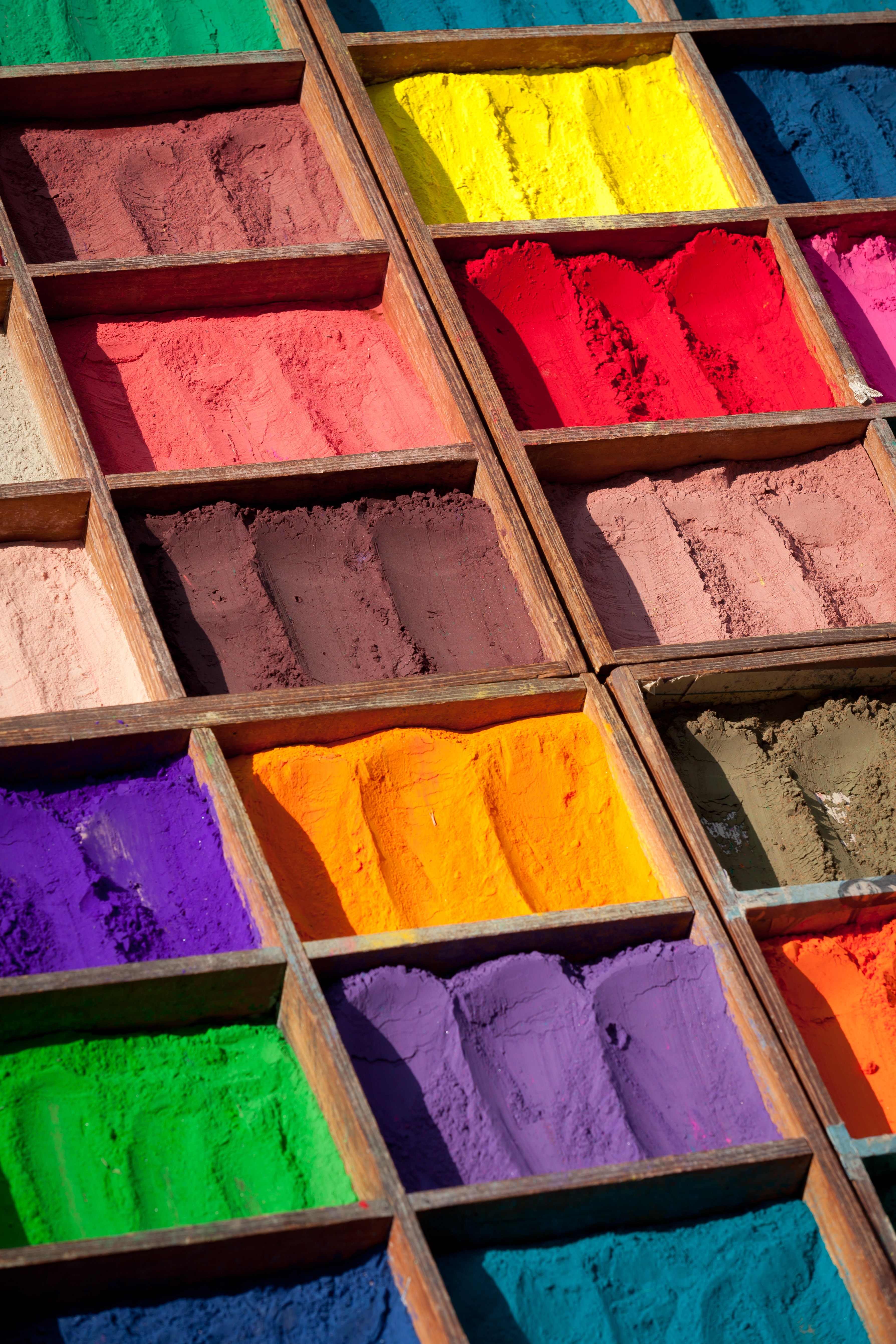
What is a thinner (medium) and what’s the use?
A thinner is usually a liquid with the same properties of the binder or a substance that can dissolve the binder.
For example, if you add water to a watercolor pan, it will start melting because the Arabic gum is water-soluble. In this case, water is the thinner for watercolors. More thinner you add, the more diluted will be your color.
Thinners are used to make colors more transparent or to achieve a lighter hue or just to make more fluid strokes. On the contrary, if our goal is a thick, opaque, saturated e strong color, we should moderate the use of thinner or don’t use it at all.
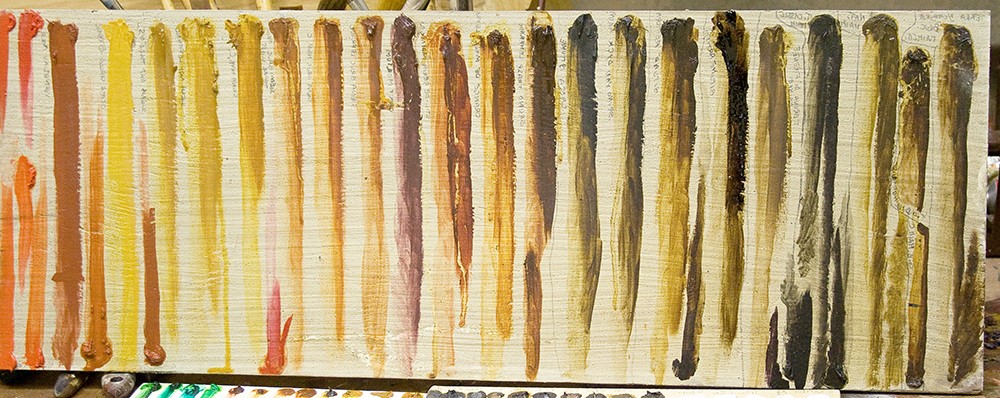
Another aspect that should be considered is “drying time”: adding a medium can lengthen or shorten the drying time.
Today there are a lot of “new” mediums for oil painting but here we will focus just on traditional materials.
Oil painting medium:
You can use oil paints without adding any thinner but if you want to change its consistency or achieve certain effects, there’s a wide choice of medium.
Excluding modern resins, we can classify mediums in two main groups:
Fat medium: Drying oils (same as binder: linseed, walnut and poppy oil)
Lean medium (solvents): Essential oils (turpentine, white or mineral spirit, oil of spike lavender)
Fat mediums dry by oxidation and it’s a long process, Lean mediums dry by evaporation in a few hours.
The drying oils have a certain viscosity while solvents have very little, they are less dense than water. In other words, drying oils are denser than solvents.
Keep reading and you will understand why all these info are important.
Oil painting techniques:
There are two main technique in oil, they are called “Direct painting” and “Indirect painting”:
Direct painting:
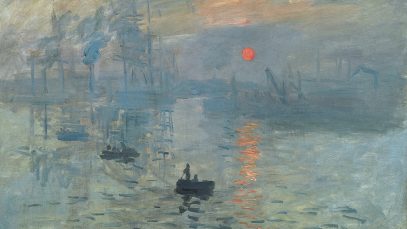
Also called “Alla prima” (from Italian “at first”) or “Wet on wet”.
Basically the painter completes the painting in one session (”Alla prima”, “At first”).
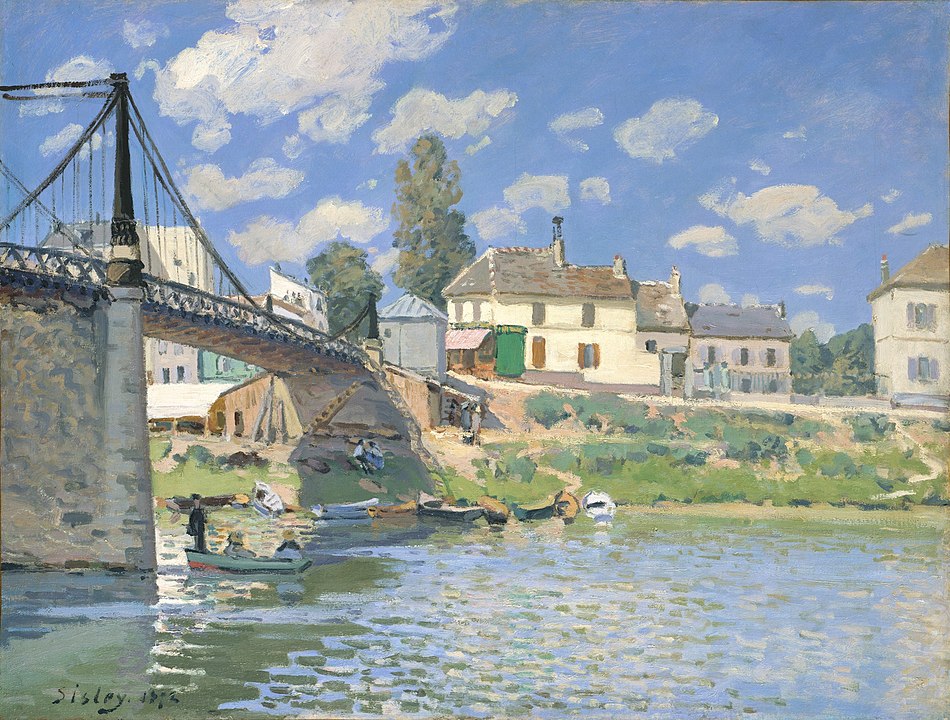
He creates the right mixtures of color for each brushstroke, he could also mix different colors directly on the canvas blending them together while the paint is still “wet” (“Wet on wet”).
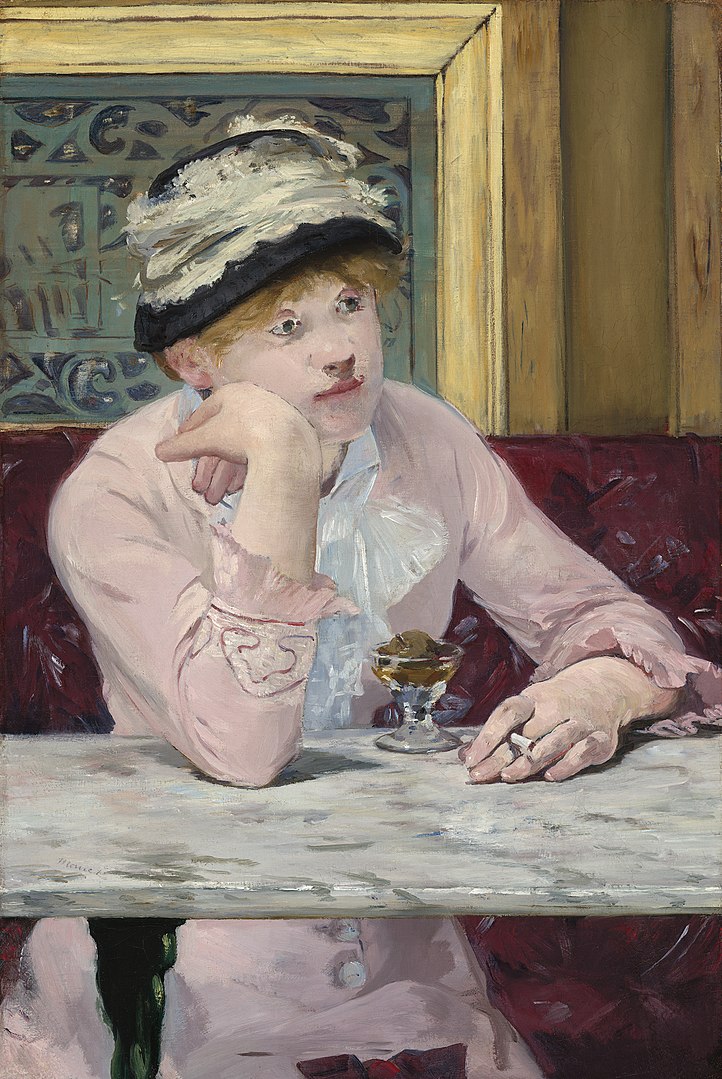
With just a few exceptions, this technique wasn’t very popular before the invention of paint tubes by American artist John Goffe Rand in 1841.
Impressionists used this technique and even today is quite popular.
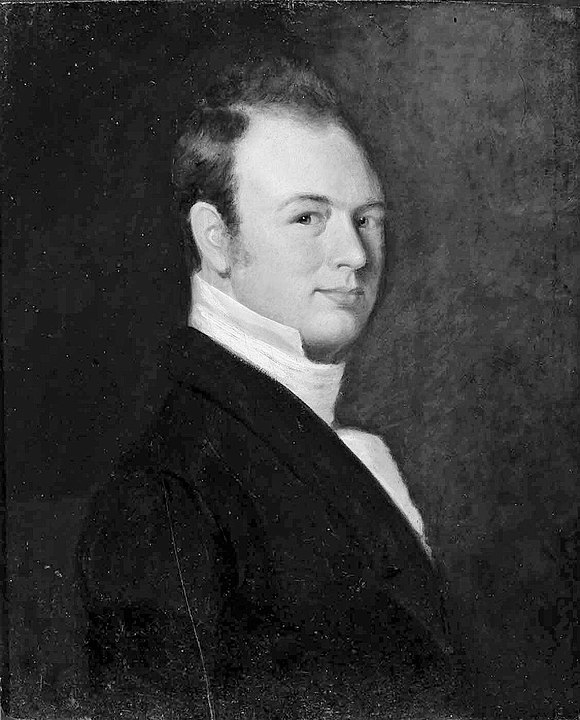
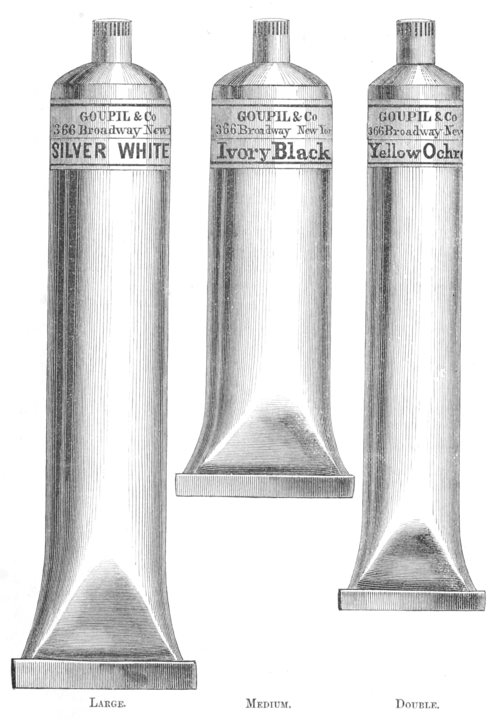
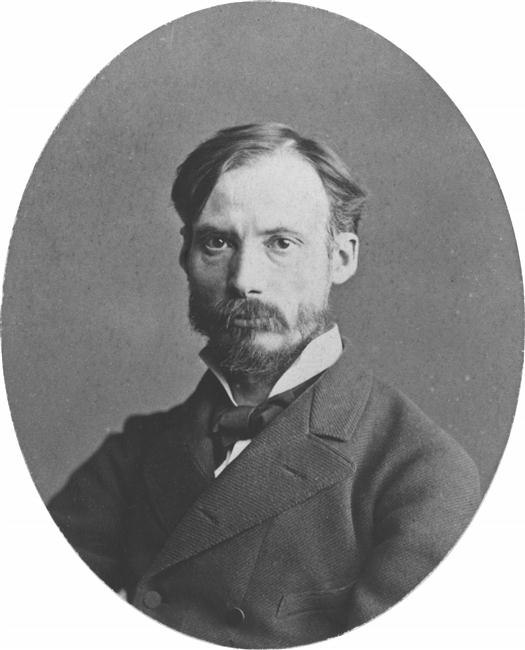
“Without tubes of paint, there would have been no Impressionism.” – Renoir
It could seem an easy way to paint because it starts and finish just in one session but actually this technique isn’t easy at all, especially for beginners.
Indirect painting:
This is the technique taught and learned by painters for over 400 years, from the Renaissance to the 19th century. It’s also called Layering or Glazing or Underpainting Technique but you can find some other terms like “Old Masters Technique” or “Academic Technique” which describe the same process.
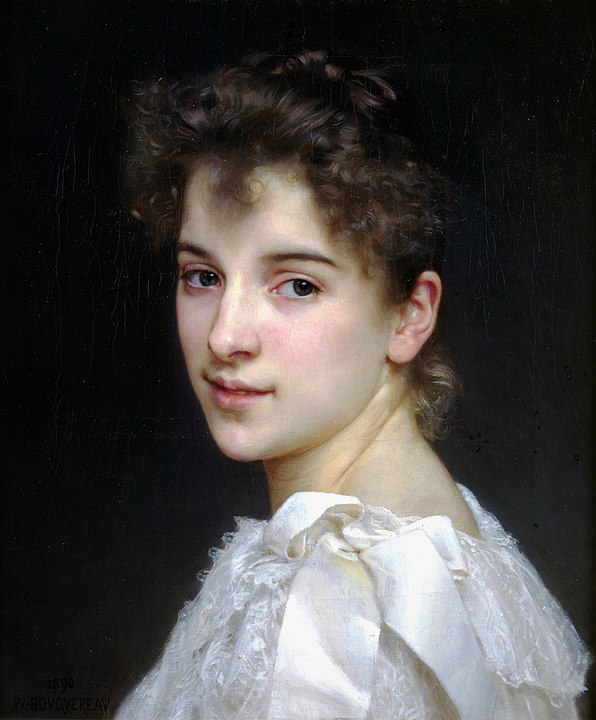
In this technique, there are several steps involved, after every session the painter has to wait until the last layer of paint is dried.
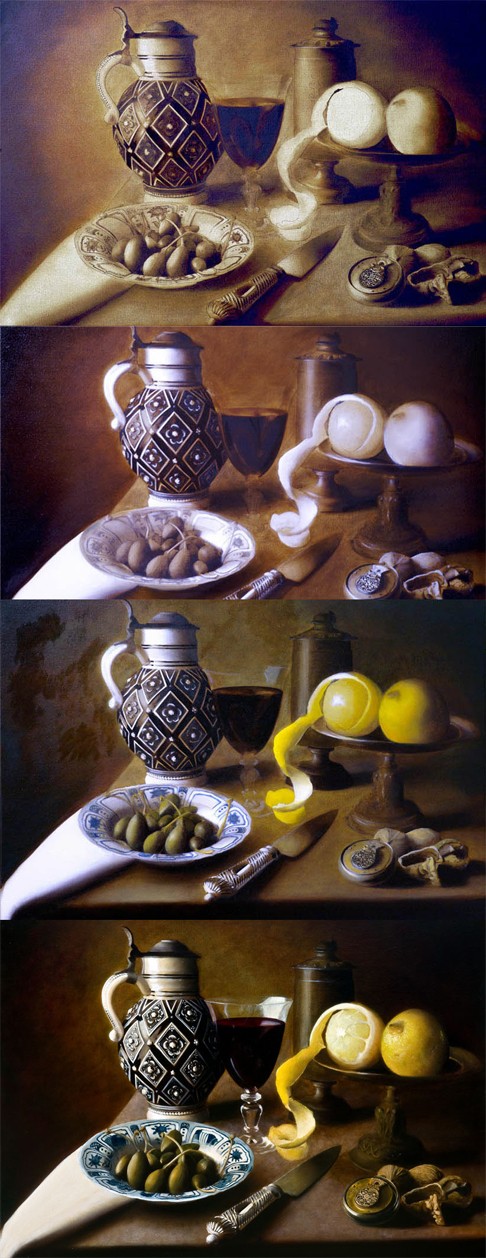
Basically the image is built overlying layers of paint.
Every step has its own function but first, let me remind you of some drawing fundamentals:
Tones & colors:
An image is a bi-dimensional representation of a three-dimensional subject. We perceive this illusion through tones and drawing: shadows, lights and all intermediate variation between the darkest tone and the lighter one.
If we take a color photo and convert it in black & white, it’s still perfectly readable: colors define just colors, we can still understand space and light in a monochromatic image.
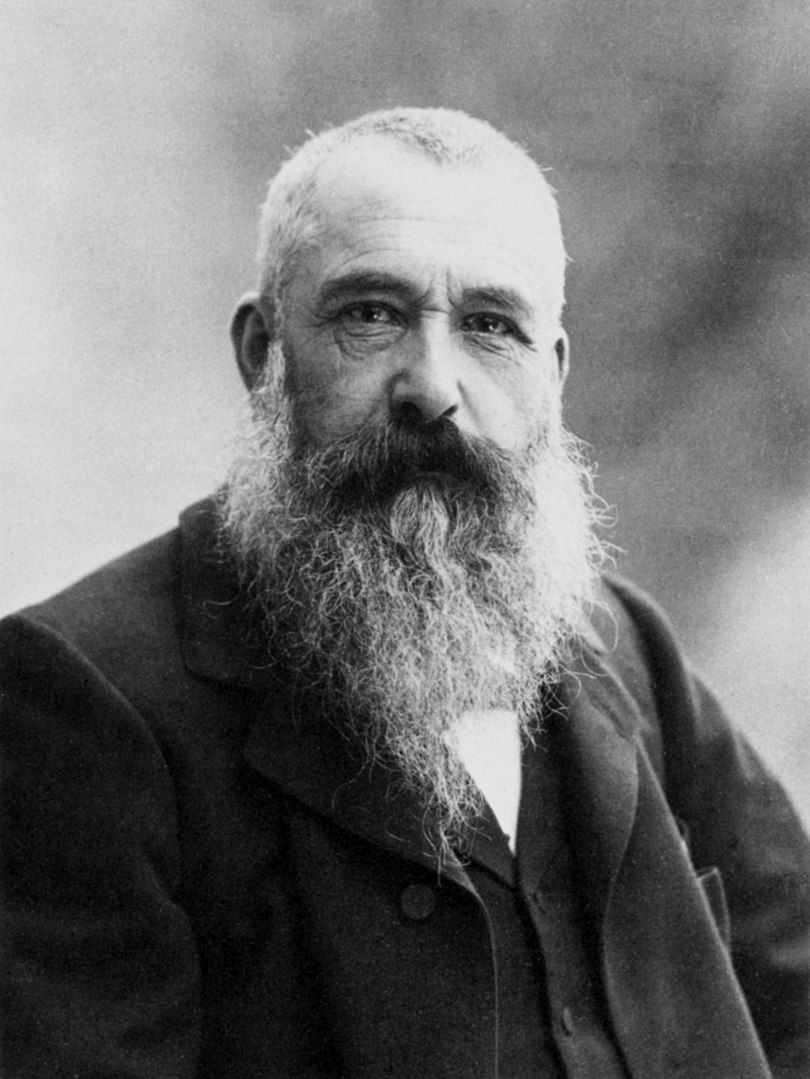
If we convert a black & white photo into its negative the bi-dimensional illusion is lost, we can’t understand shapes, form, textures, depth, shadows and lights without tones.
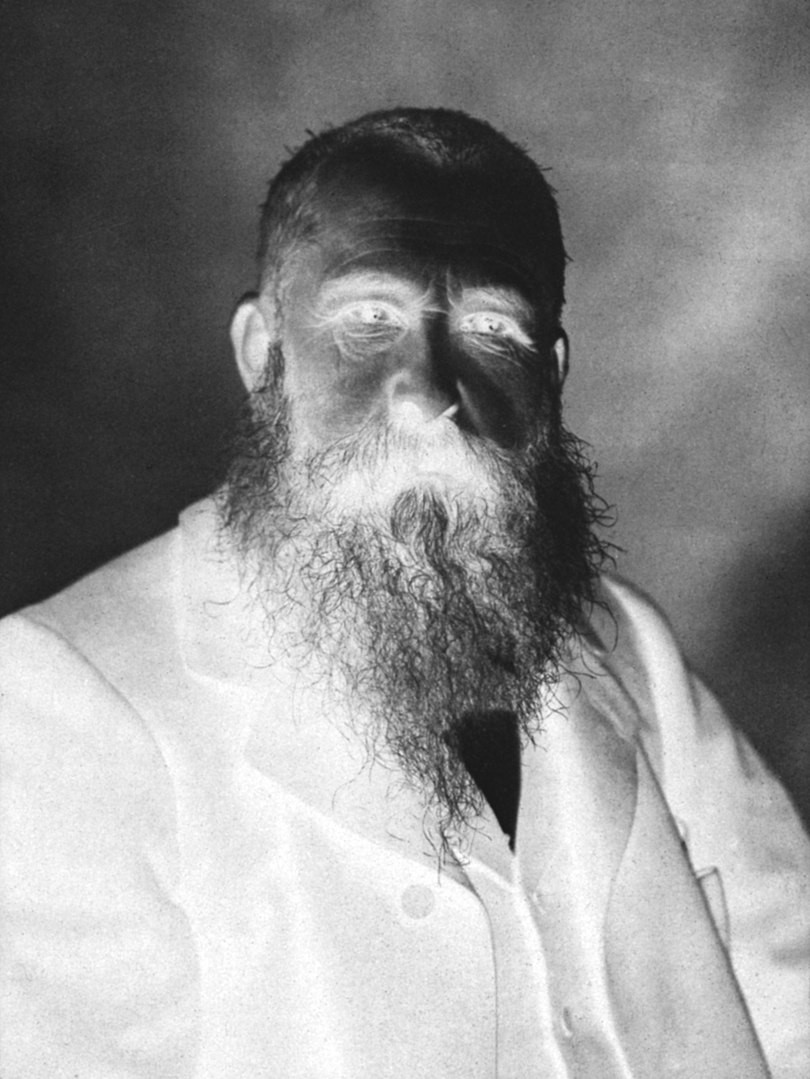
For this reason, Old Masters didn’t consider colors so much important as tones (at least from the Renaissance to the 19th century). They were more focused on drawing and tonal value.

“Drawing includes three and half quarters of the content of painting…The drawing contains everything except the hue.”
– Jean-Auguste-Dominique Ingres
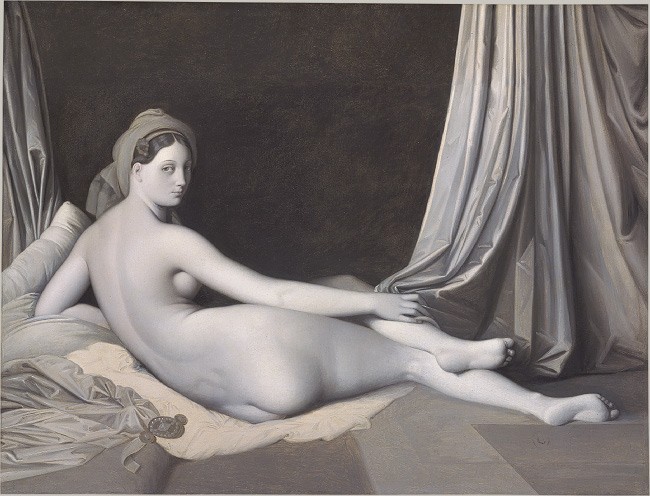
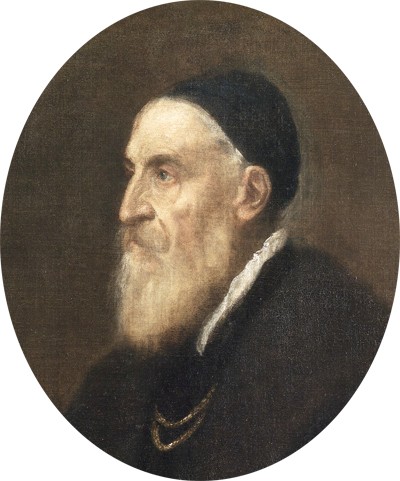
“It is not bright colors but good drawing that makes figures beautiful.”
– Titian
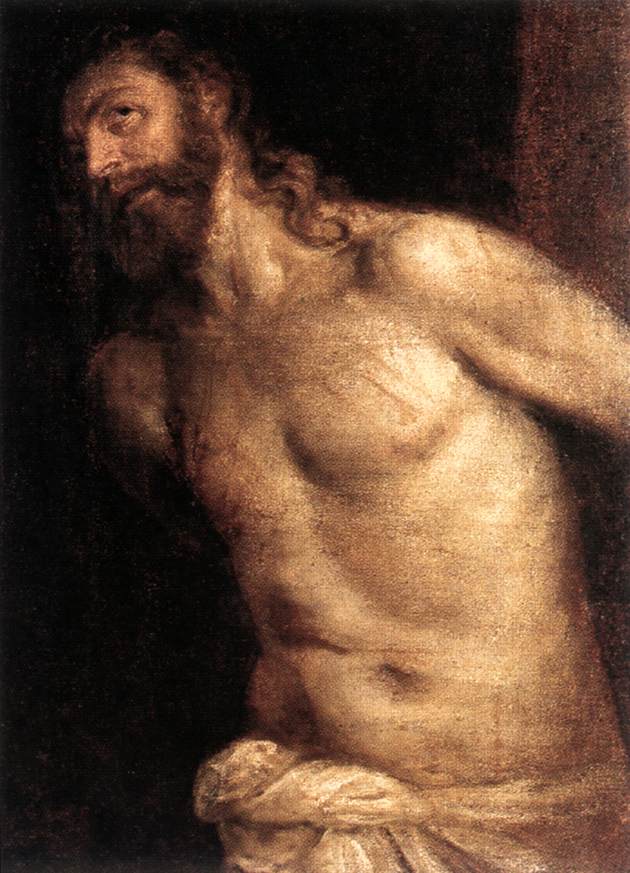
I step: Toning a canvas – “Imprimitura”
It’s a mid-tone coat of paint thinned with solvents spread all over the canvas.
For example, a brown color like an earth pigment (burnt umbra, raw umbra, raw Siena, etc) or a mid-tone mixture of different pigments could be thinned with the mineral spirit or turpentine and used to cover uniformly canvas or boards.
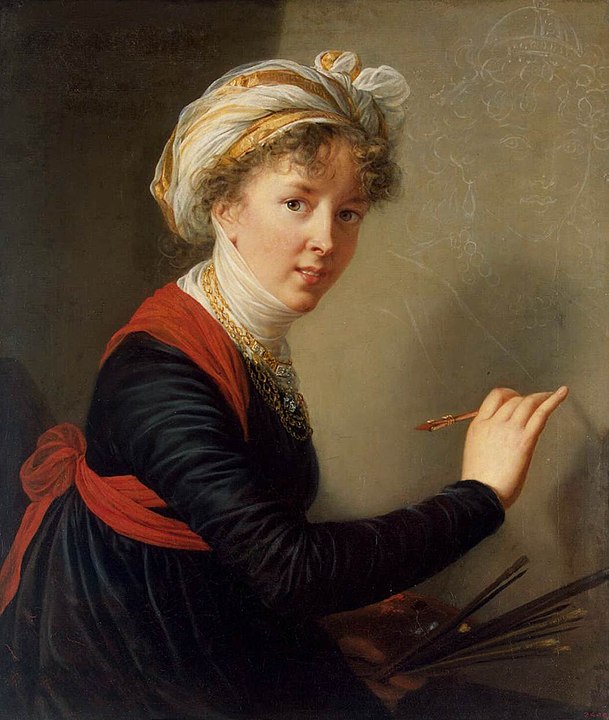
This is done because painting on a toned surface it’s easier than painting on a white surface.
Think for a moment at pencil drawing: if you draw on white paper you have to work on shadows and mid-tones leaving the white of the paper as highlights; if you draw on toned paper you have to work just on shadows and highlights adding some kind of white color.
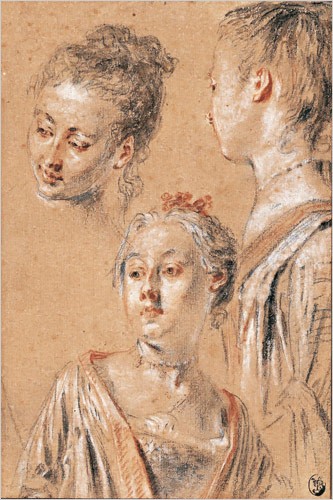
II step: Tonal values – “Underpainting”
In this step, the painter uses just one pigment (usually an earth color) thinned with a mixture of drying oil and solvents and starts building a monochromatic completed picture of the subject.
Earth colors are cheap pigments and dry fast, for these reasons they are the best choice for underpainting. This step can be done in several sessions.
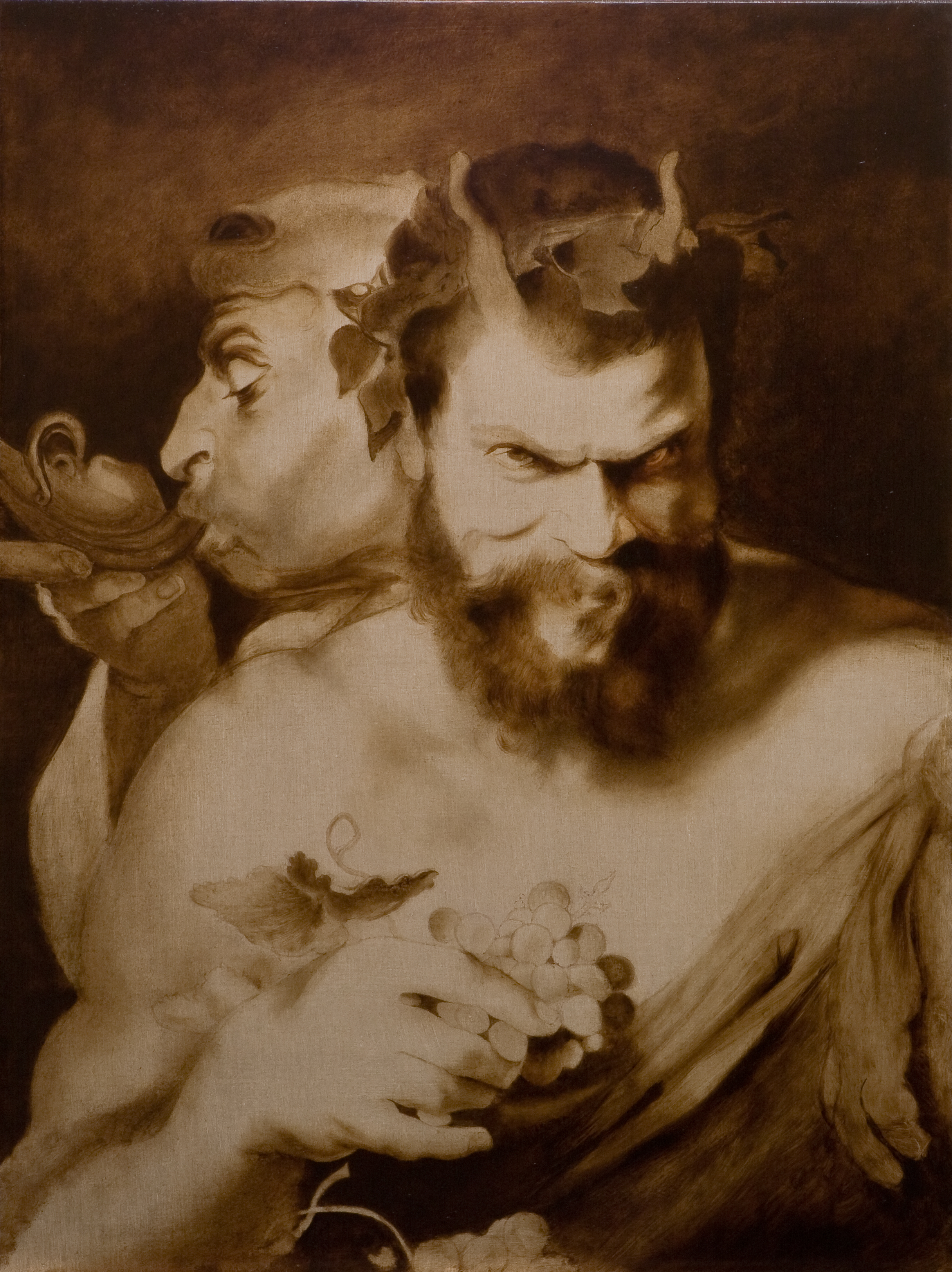
“Grisaille” (grey tones) it’s a kind of underpainting made with mixtures of black and white and it’s painted over the earth color underpainting; it could cover the entire picture or just a small portion of it. Its function is to reflect light through the last color layer.
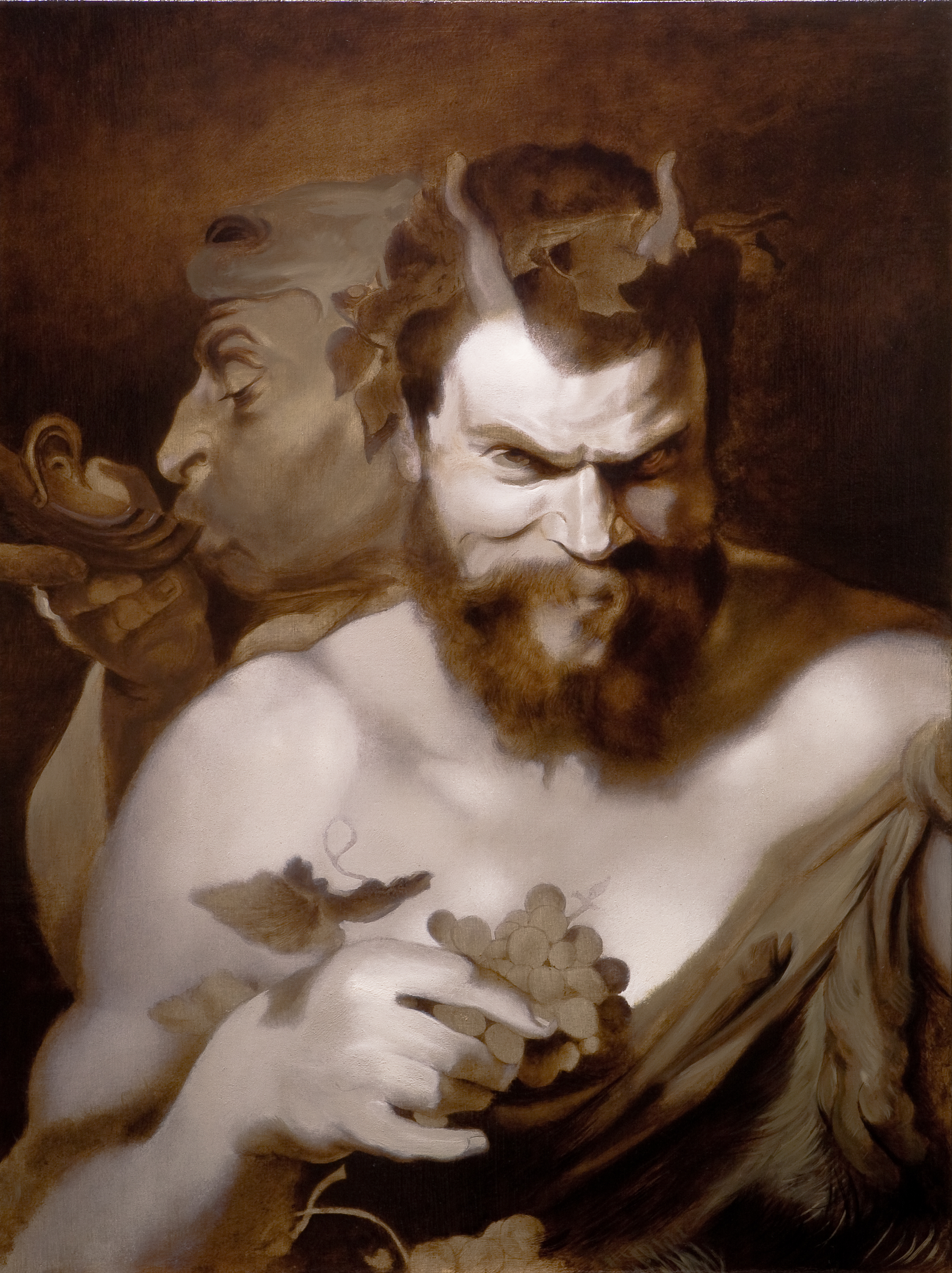
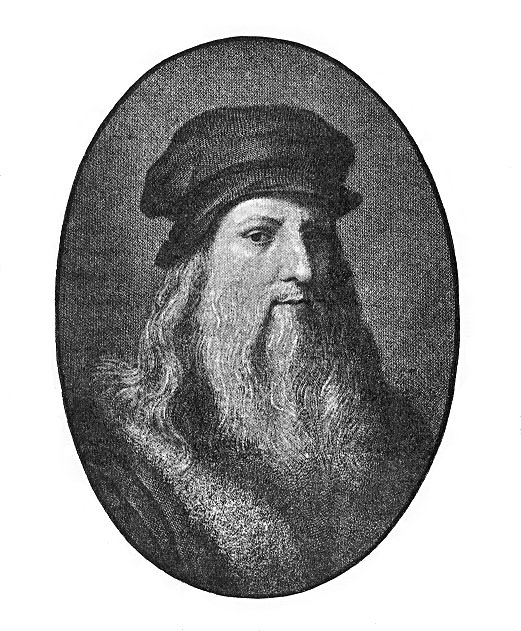
“For those colors which you wish to be beautiful, always first prepare a pure white ground.”
– Leonardo da Vinci
III step: “Colors”
Once the underpainting is completed and dry, it’s time to add colors mixed with oil to make them more transparent. Nowadays oil colors are cheap but in the past centuries certain pigments were very expensive, this is why the Old Masters used to paint pure color glazing over an underpainting, they could not waste more vivid color pigments. Also, pure colors are much more vibrant and saturated than any mixture of two or more pigments.
Oil painting rules:
Slow drying over fast drying:
– Fat over lean
– Thick over thin
These rules are very important when we paint in layers with the indirect painting method.
As I said the first layer is made spreading a coat of paint thinned with turpentine or white spirit which are lean solvents.
Underpainting (monochromatic earth tone or “grisaille”) should be painted adding a mixture of drying oil and solvent, colors are thinned just with oil.
Recap:
- 100% lean solvent
- 50% lean solvent + 50% drying oil
- 100% drying oil
The first layers are lean and become increasingly fat as we add layers. In other words, the previous layer has to be less fat than the next or, if you prefer, the next layer has to be more fat than the previous.
Why this order is so important? It’s really simple: lean solvent dry faster than oils; if we paint lean over fat, the last layer will be dry before the previous which, while drying, will keep moving for a long time. Lean over fat layers soon or later will crack.
Thick paint has much more oil than thin paint and for this reason, it will dry slowly. If we add a faster drying thin brush-stroke of paint over a thick one before it’s completely dried, it will crack after a few years.
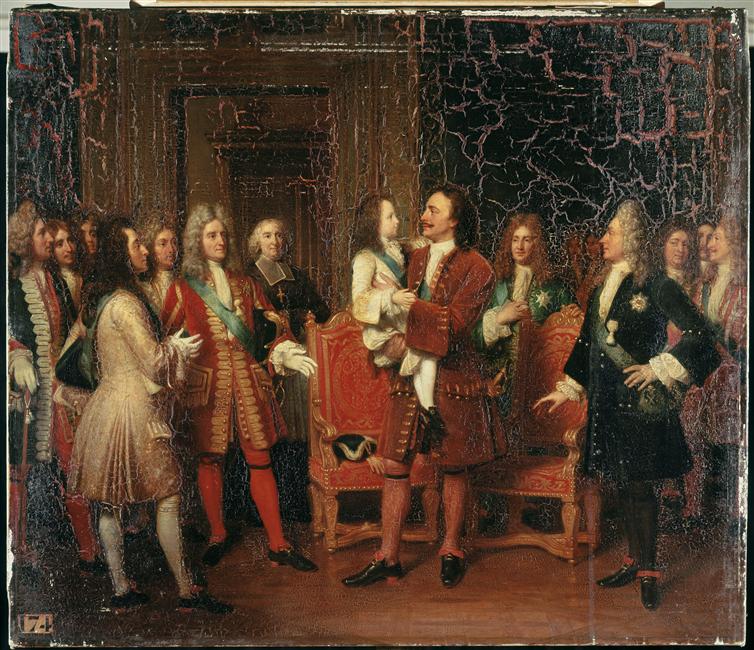
What do you really need to start painting in oil?
- Oil colors
- Brushes
- Easel
- Palette
- Drying oils
- Solvents
- Canvas or board
- Baby oil
Oil colors:
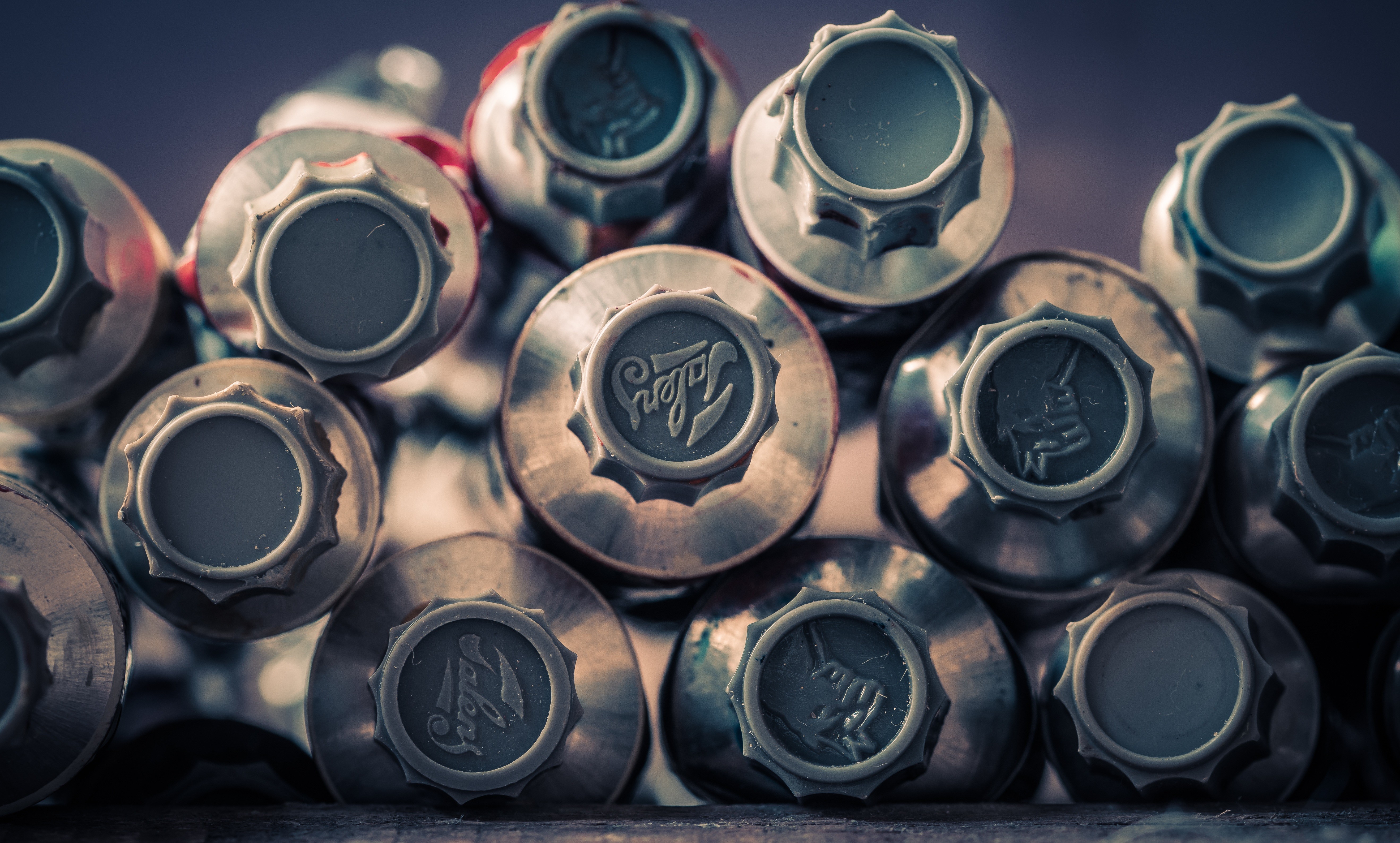
Nowadays oil colors are much better than in the past centuries, my only suggestion is to avoid the cheapest (oil paint for kids) as well as the most expensive brands (top range price).In my opinion, a set of 8 or 12 colors it’s the best choice. It’s true that all colors can be created mixing just 3 primary colors but there’s no real need to work with a so limited palette.
Brushes:
 This is a huge topic because there are so many types of painting brushes. If you are going to buy your first set of brushes, I would suggest you find lots of used painting brushes on eBay.
This is a huge topic because there are so many types of painting brushes. If you are going to buy your first set of brushes, I would suggest you find lots of used painting brushes on eBay.
Easel:
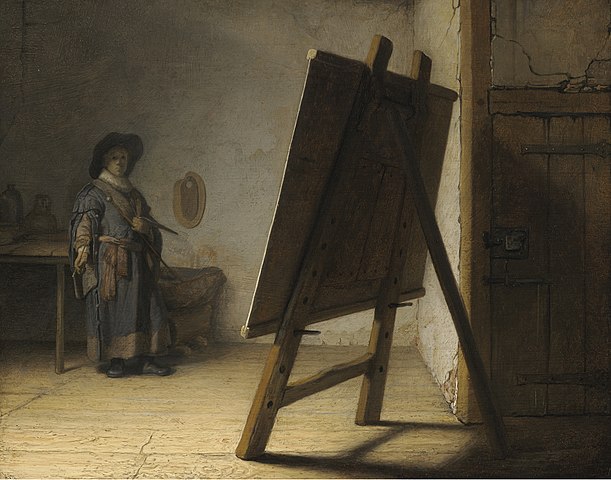
The choice of the easel depends on how much space is available in your studio, on what size is your canvas and on your budget. Working on a large painting will be easier on a heavy and big easel. For medium and little size painting, almost every easel will work fine.
Palette:
 Plastic dishes, a piece of scrap wood, a ceramic, or a glass plate…all these things could be used as a palette. There’s no need to use an expensive palette, it’s just a surface where you put and mix colors.
Plastic dishes, a piece of scrap wood, a ceramic, or a glass plate…all these things could be used as a palette. There’s no need to use an expensive palette, it’s just a surface where you put and mix colors.
Drying oils:
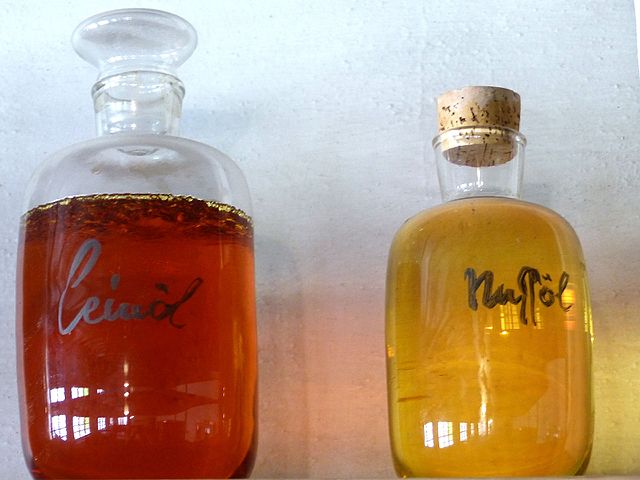 Linseed oil, poppy oil and walnut oil are the most popular drying oils. Linseed and walnut oil dry faster than poppy oil. Walnut and poppy oil don’t turn yellowish like linseed oil. However, you really need just one of them.
Linseed oil, poppy oil and walnut oil are the most popular drying oils. Linseed and walnut oil dry faster than poppy oil. Walnut and poppy oil don’t turn yellowish like linseed oil. However, you really need just one of them.
Solvents:
 Turpentine, white or mineral spirit can be used to thin paint or to clean brushes. Also, it can be used as a medium in the first stage of painting. Turpentine dry slower than white spirit.
Turpentine, white or mineral spirit can be used to thin paint or to clean brushes. Also, it can be used as a medium in the first stage of painting. Turpentine dry slower than white spirit.
Canvas or board:
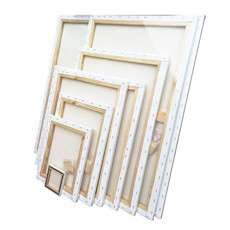 Canvases are ready to be painted while wood boards should be coated with some gesso or some glue (read this article about the preparation of a wood board following the Cennino Cennini‘s method).
Canvases are ready to be painted while wood boards should be coated with some gesso or some glue (read this article about the preparation of a wood board following the Cennino Cennini‘s method).
Baby oil:
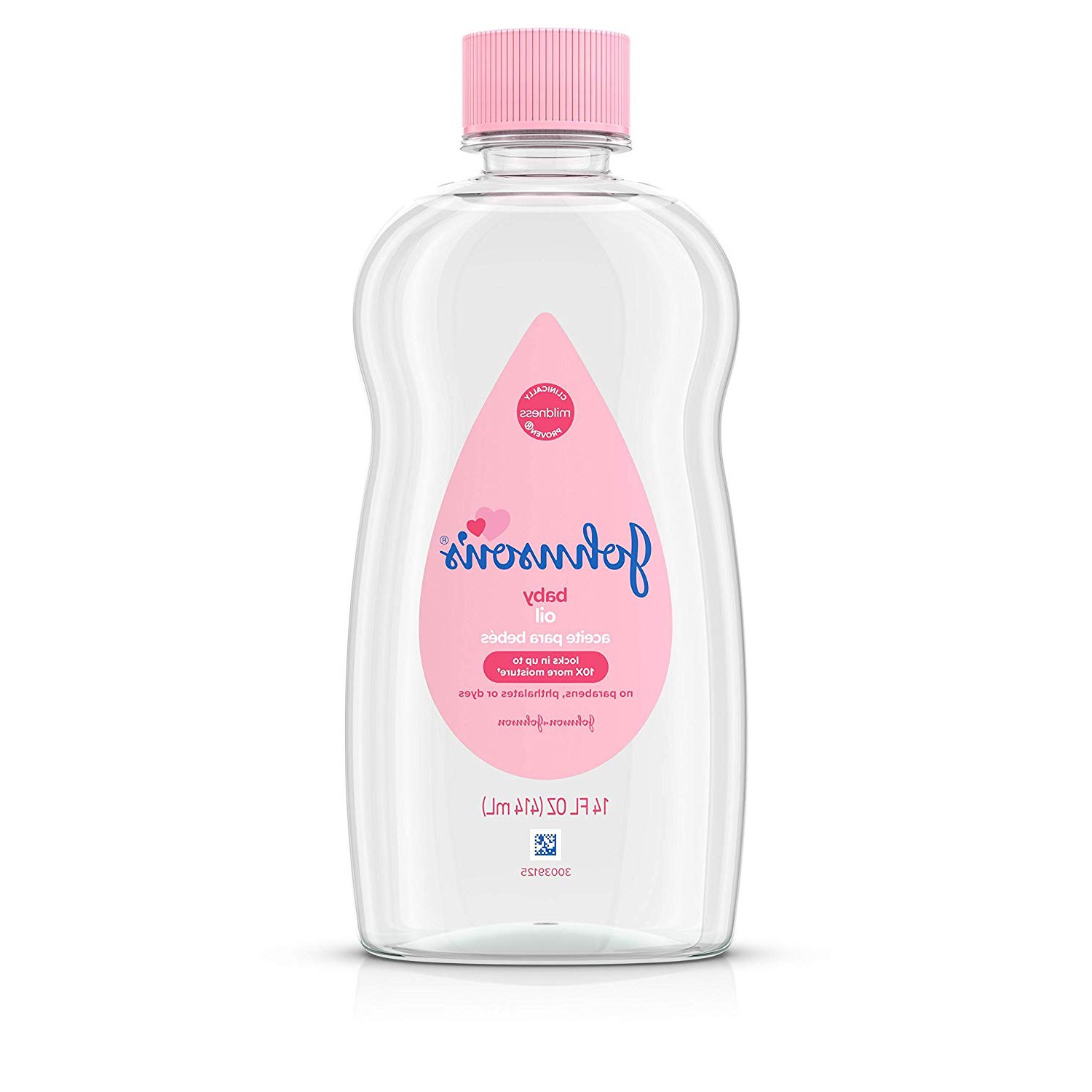 A few years ago I stopped using solvents to clean my brushes because I found that some painters use baby oil to do it. It’s true! Baby oil works perfectly for cleaning brushes and doesn’t smell like solvents. I really suggest you give it a try.
A few years ago I stopped using solvents to clean my brushes because I found that some painters use baby oil to do it. It’s true! Baby oil works perfectly for cleaning brushes and doesn’t smell like solvents. I really suggest you give it a try.
Thanks for reading!
I hope you’ve learned something new, If you’ve found this article interesting or useful, please share it. We will keep posting new articles and guides, so stay tuned on PaintingTube!
Author: Giovanni Lucifero

